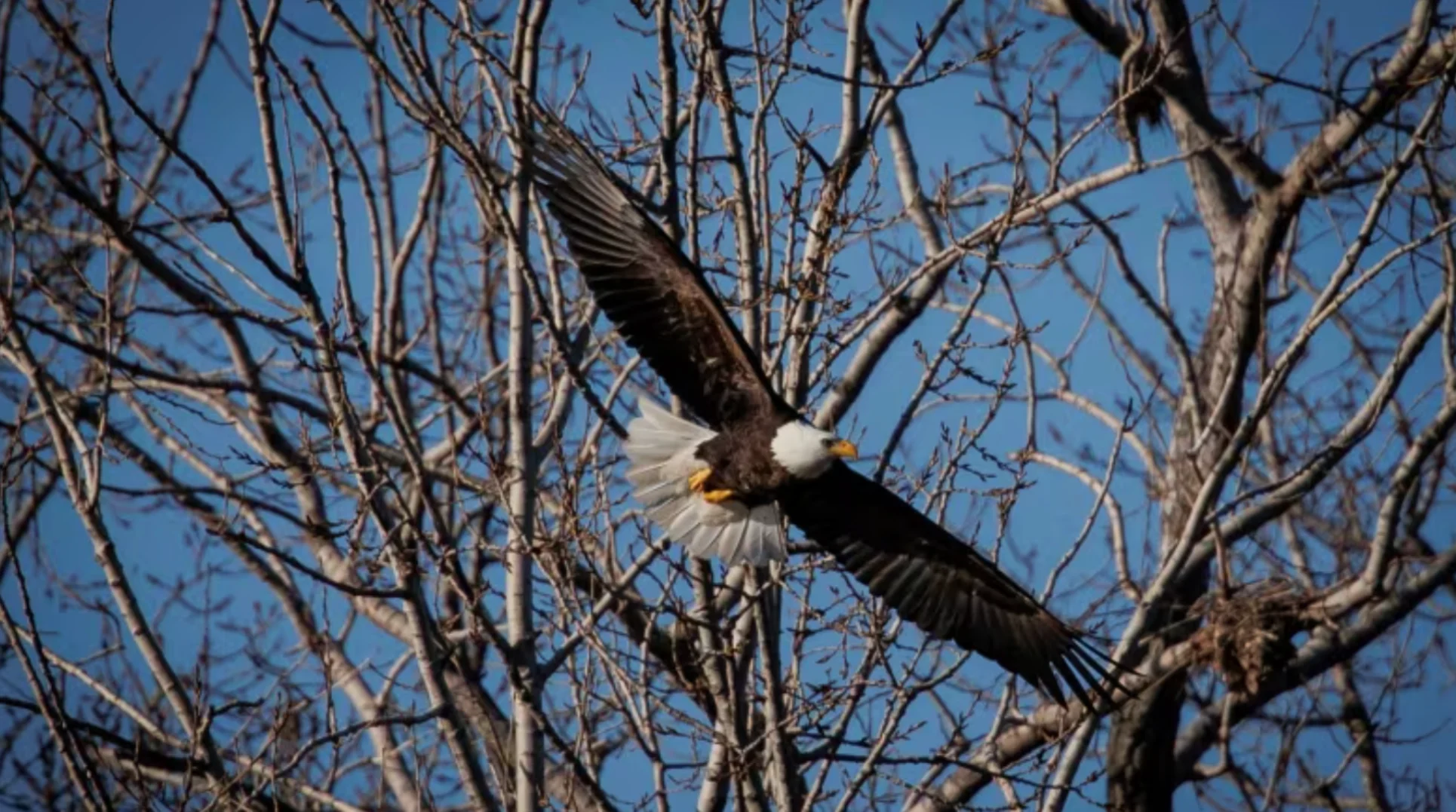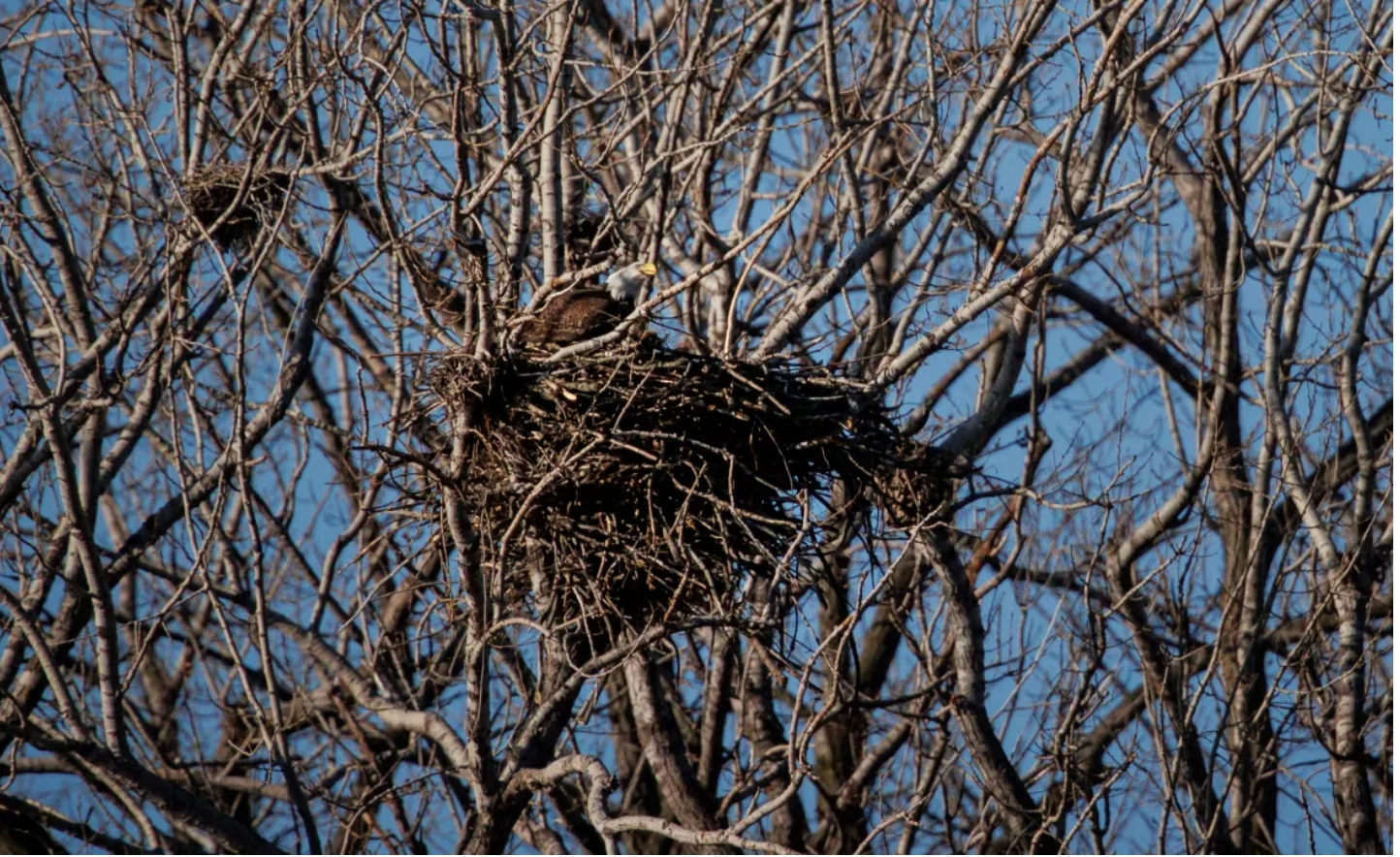
Toronto's first documented bald eaglets developing well, TRCA says
The pair of eaglets growing in Toronto's first-recorded bald eagle nest seem to be doing well, a conservation official says, but the young raptors are in a "very precarious time" in their development.
"They are doing a lot of wing flapping and hopping around the nest, which is a good sign," says Karen McDonald, senior manager of restoration and infrastructure at the Toronto Region Conservation Authority.
McDonald and her colleagues have been carefully observing the nest since it was discovered in mid-February, after a mating pair of adult bald eagles was seen showing signs of courtship.
The location of the nest is a closely guarded secret and even TRCA maintains a "large buffer" around it, McDonald says, watching the eagle family only from a distance through a spotting scope.
"Despite these birds being really large and fierce, they are actually very sensitive to human disturbance," McDonald told CBC Radio's Metro Morning on Monday.
The eaglets are about five or six weeks old and have another six to eight weeks before they can take to the skies above the city, she said.
"They have enough movement to move around their nest, but they are not strong enough to fly. There is a real risk that if they are disturbed from this nest they could prematurely fledge, which means they could leave the nest before they could fly," McDonald says.
"And in that case they could really injure themselves or even die."

TRCA has been carefully observing the nest through a spotting scope. There are two eaglets who both seem to be doing well. (Evan Mitsui/CBC)
RELATED: Here's why experts advise against feeding wildlife
'Still a long road ahead' for eaglets
Their parents are feeding them regularly, she adds, another good sign that the eaglets are in good health. McDonald says the young eagles are a bit odd looking.
"They are gangly-looking and they haven't really grown into their beak yet and they are only just starting to get their feathers. Let's say 'a face only a mother could love'," she told guest host Molly Thomas.
Once the young birds are able to fly, their parents will continue to care for them for another four to six weeks, McDonald says.
"There is still a long road ahead for these eaglets, but we are pretty optimistic about it."

The nest was first discovered in mid-February, the TRCA says. One of the pair of nesting bald eagles is pictured near its nest on March 7, 2024. (Evan Mitsui/CBC)
SEE ALSO: Pacific Blob behind the death of millions of birds
Historically, the area now called Toronto would have made a spectacular habitat for bald eagles. But that habitat was severely degraded post-colonization as the city's lakefront was heavily industrialized, McDonald says.
That a mating pair of bald eagles has returned is an encouraging sign that long-term efforts to restore native habitat are working, according to McDonald.
The TRCA is urging anyone who may come to discover the location of the nest keep it under wraps.
If you happen to find out where the nest is, please don't disclose it. Please don't post it on social media," McDonald says.
"Let's give these birds the best chance of making it by giving them their space."
WATCH: Why you shouldn't feed urban wildlife
This article was originally published for CBC News.









